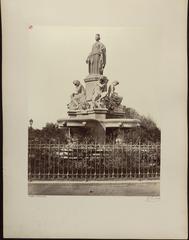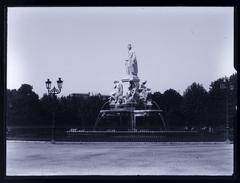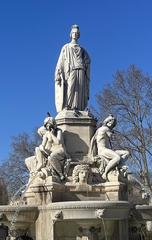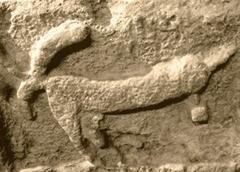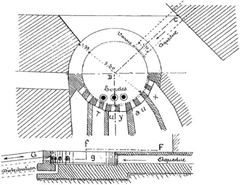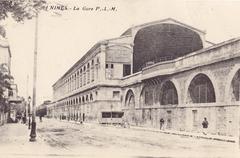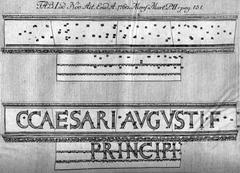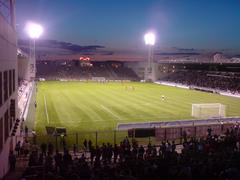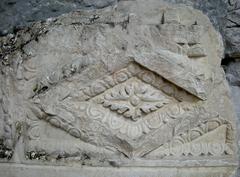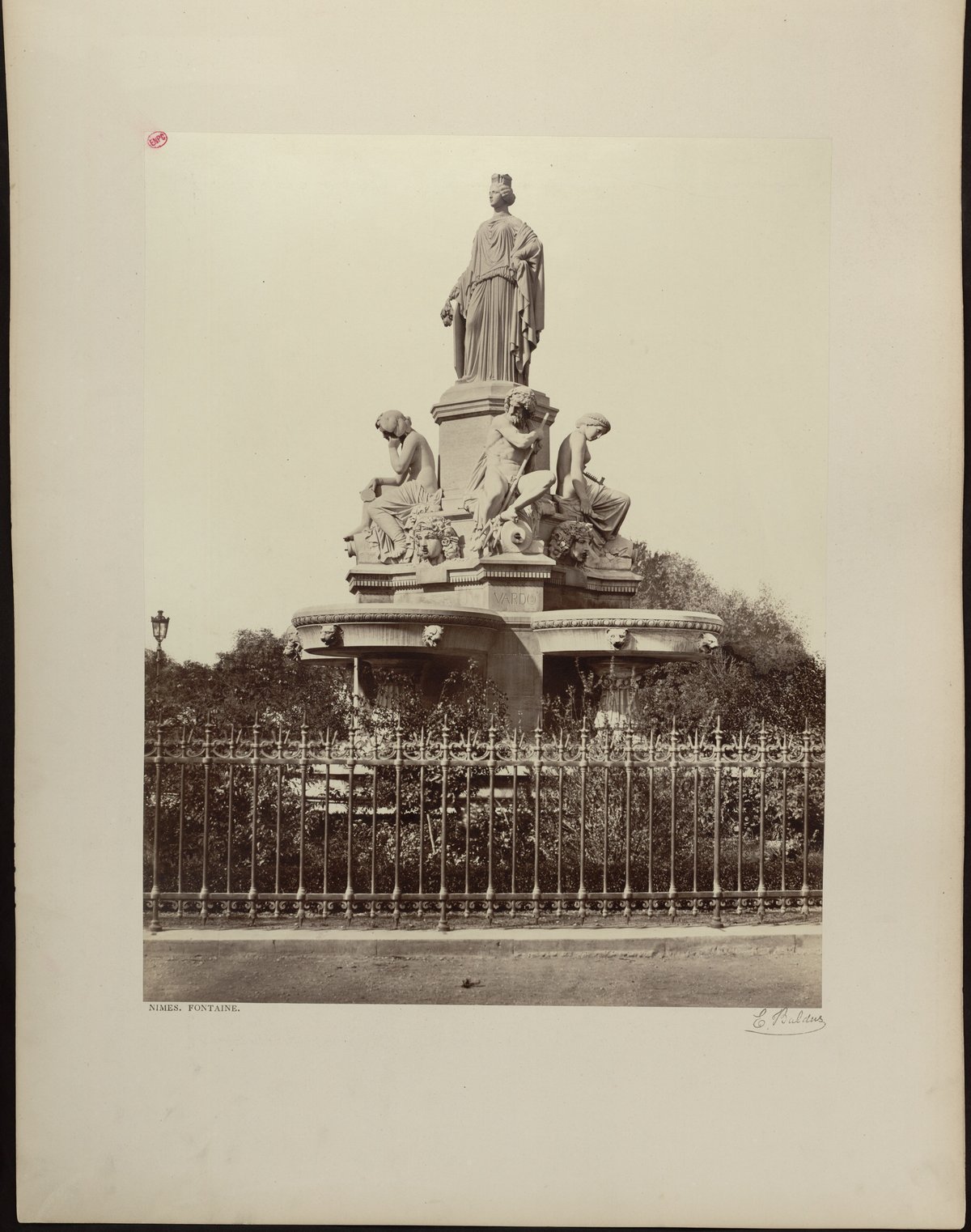
Visiting Fontaine Pradier: Hours, Tickets, and Historical Sites in Nîmes
Date: 19/07/2024
Introduction
Nestled in the heart of Nîmes, France, Fontaine Pradier stands as a testament to the city’s rich historical tapestry and artistic heritage. Inaugurated in 1851, this neoclassical masterpiece was designed by renowned architect Charles Questel and sculptor James Pradier. The fountain was part of a broader urban development plan that aimed to modernize and beautify Nîmes’ public spaces. Fontaine Pradier quickly became a beloved landmark, symbolizing the city’s blend of ancient Roman history and 19th-century modernization. This comprehensive guide delves into the fountain’s history, architectural significance, and practical tips for visitors, ensuring you make the most of your visit to this iconic monument. Whether you’re a history enthusiast, art lover, or simply looking for a picturesque spot to relax, Fontaine Pradier offers a memorable experience that captures the essence of this charming French city (City of Nîmes Official Website) (Nîmes Tourism) (James Pradier Biography and Works).
Table of Contents
- Origins and Construction
- Architectural Significance
- Historical Context
- Visitor Information
- Cultural Impact
- Nearby Attractions
- Preservation and Restoration
- Accessibility
- Fontaine Pradier in Modern Times
- FAQ
Discover the History and Visiting Hours of Fontaine Pradier in Nîmes
Origins and Construction
Fontaine Pradier, located in the heart of Nîmes, France, is a significant historical monument that dates back to the mid-19th century. The fountain was commissioned as part of the city’s efforts to modernize and beautify its public spaces. The project was initiated in 1845, and the fountain was completed in 1851. The design was the brainchild of Charles Questel, a renowned French architect, and the statue that crowns the fountain was sculpted by James Pradier, a celebrated artist of the time. This collaboration between Questel and Pradier resulted in a masterpiece that has since become a symbol of Nîmes.
Architectural Significance
The architectural design of Fontaine Pradier is a testament to the neoclassical style that was prevalent during the 19th century. The fountain features a central column adorned with intricate carvings and topped with a statue of a woman representing the city of Nîmes. The statue, crafted by James Pradier, is a striking example of his skill in capturing the human form and imbuing it with a sense of grace and dignity. The base of the fountain is surrounded by four allegorical figures representing the rivers that flow through the region—the Rhône, the Gardon, the Durance, and the Vidourle. These figures are not only decorative but also serve to highlight the importance of water to the city’s history and development.
Historical Context
The construction of Fontaine Pradier took place during a period of significant change and modernization in Nîmes. The mid-19th century was a time of industrial growth and urban development in France, and Nîmes was no exception. The city was expanding, and there was a concerted effort to improve public infrastructure and amenities. The creation of the fountain was part of a broader initiative to enhance the city’s aesthetic appeal and provide its residents with beautiful and functional public spaces.
Visitor Information
Fontaine Pradier is accessible to the public year-round and is located in the Esplanade Charles-de-Gaulle. There are no entry fees to visit the fountain, making it an ideal spot for tourists and locals alike. The best time to visit is during the daytime when the intricate details of the fountain can be fully appreciated.
- Best Time to Visit: Spring and autumn are ideal seasons to visit Nîmes and Fontaine Pradier, as the weather is pleasant and the park is in full bloom.
- Getting There: Nîmes is well-connected by train and bus. The fountain is a short walk from the Nîmes train station.
- Nearby Amenities: There are several cafes and restaurants around the Esplanade Charles-de-Gaulle where visitors can relax and enjoy local cuisine.
Cultural Impact
Fontaine Pradier quickly became a beloved landmark in Nîmes, and it has remained an important part of the city’s cultural heritage. The fountain is not only a popular spot for tourists but also a gathering place for locals. Over the years, it has been the site of numerous public events and celebrations, further cementing its status as a central feature of the city’s social life. The fountain’s enduring appeal is a testament to the skill and vision of its creators, as well as to the city’s commitment to preserving its historical and cultural landmarks.
Nearby Attractions
While visiting Fontaine Pradier, be sure to explore other historical sites in Nîmes:
- Arènes de Nîmes: A well-preserved Roman amphitheater.
- Maison Carrée: One of the best-preserved Roman temples in the world.
- Jardins de la Fontaine: A beautiful public garden with Roman ruins.
Preservation and Restoration
Over the years, Fontaine Pradier has undergone several restoration efforts to ensure its preservation for future generations. The most recent restoration took place in 2018, when the fountain was carefully cleaned and repaired to address the wear and tear that had accumulated over the decades. This restoration was part of a larger initiative by the city of Nîmes to maintain and protect its historical monuments. The project was carried out by a team of skilled artisans and conservators, who worked meticulously to restore the fountain to its original glory. The successful completion of this restoration has ensured that Fontaine Pradier will continue to be a cherished landmark for many years to come.
Accessibility
The Esplanade Charles-de-Gaulle, where Fontaine Pradier is located, is wheelchair accessible. There are paved pathways and ramps that make it easy for visitors with mobility challenges to navigate the area.
Fontaine Pradier in Modern Times
Today, Fontaine Pradier stands as a symbol of Nîmes’ rich history and cultural heritage. It is a must-see attraction for visitors to the city, offering a glimpse into the artistic and architectural achievements of the 19th century. The fountain is located in the Esplanade Charles-de-Gaulle, a beautiful public park that provides a serene setting for this historic monument. Visitors can enjoy the beauty of the fountain while also exploring the surrounding park, which features lush greenery, walking paths, and other attractions.
FAQ
Q: What are the visiting hours for Fontaine Pradier?
A: Fontaine Pradier is accessible to the public 24/7 as it is located in a public park.
Q: Is there an entrance fee to visit Fontaine Pradier?
A: No, visiting Fontaine Pradier is free of charge.
Q: Are guided tours available?
A: While there are no specific guided tours for Fontaine Pradier, guided tours of Nîmes often include a visit to the fountain.
Q: Is Fontaine Pradier wheelchair accessible?
A: Yes, the Esplanade Charles-de-Gaulle is wheelchair accessible.
References and Further Reading
For those interested in learning more about Fontaine Pradier and its history, there are several resources available. The official website of the city of Nîmes provides detailed information about the fountain and other historical landmarks in the city. Additionally, there are numerous books and articles that delve into the history and significance of Fontaine Pradier, offering a deeper understanding of this remarkable monument.
- City of Nîmes Official Website
- James Pradier Biography and Works
- Neoclassical Architecture in France
By exploring these resources, visitors can gain a greater appreciation for Fontaine Pradier and its place in the history and culture of Nîmes.
Call to Action
Discover more about the historical and cultural landmarks of Nîmes by following us on social media and downloading our mobile app Audiala for guided tours and updates on the city’s attractions.
Conclusion
Fontaine Pradier is more than just a fountain; it is a symbol of Nîmes’ rich history and cultural heritage. Its artistic and architectural significance, combined with its role in the social life of the city, makes it a must-visit landmark for anyone traveling to Nîmes. The fountain’s neoclassical design, featuring intricate carvings and allegorical statues, offers a glimpse into the artistic achievements of the 19th century. The surrounding Esplanade Charles-de-Gaulle provides a serene setting for this historic monument, making it a perfect spot for both relaxation and exploration. With its accessibility, free admission, and proximity to other historical sites like the Arènes de Nîmes and Maison Carrée, Fontaine Pradier is an essential stop on any itinerary. Whether you’re visiting for the first time or returning to relive the beauty, Fontaine Pradier continues to captivate and inspire, reflecting the enduring charm of Nîmes (City of Nîmes Official Website) (Nîmes Tourism) (James Pradier Biography and Works).
References
- City of Nîmes Official Website, 2024, City of Nîmes https://www.nimes.fr
- James Pradier Biography and Works, 2024, Biography https://www.biography.com/artist/james-pradier
- Neoclassical Architecture in France, 2024, Architecture.com https://www.architecture.com/explore-architecture/neoclassical-architecture
- Nîmes Tourism, 2024, Nîmes Tourism https://www.nimes-tourisme.com
